Understanding the Shift in Skin Healthcare Delivery
The landscape of dermatology is rapidly evolving with the advent of telemedicine, making skin health and cosmetic concerns more accessible than ever. Remote consultations for skin issues leverage secure digital platforms to connect patients with licensed dermatologists without the need for physical visits. This article explores how virtual dermatology works, its benefits, conditions treated, and what patients can expect from online skin care services.
How Remote Dermatology Consultations Operate

How do remote dermatology consultations work for skin health and cosmetic concerns?
Remote dermatology consultations, often called teledermatology, enable patients to connect with dermatologists without visiting a clinic physically. Patients start by uploading high-quality photos of their skin concerns through secure, HIPAA-compliant platforms like TeleDerm. These clear images are essential for accurate assessment and are taken in a well-lit, makeup-free environment.
Once the images are submitted, a board-certified dermatologist reviews them remotely. The dermatologist evaluates the skin condition, diagnoses issues such as acne, eczema, psoriasis, or suspicious moles, and then provides personalized recommendations. These might include prescription medications, skincare routines, or lifestyle advice tailored to the individual's needs.
In addition to photographs, many platforms utilize secure video calls or messaging to facilitate further discussion. This combination of visual assessment and real-time communication helps ensure an accurate diagnosis and appropriate treatment plan.
Teledermatology offers several advantages. It speeds up the diagnostic process, makes specialized care accessible to those in remote or underserved areas, and reduces the need for in-person visits—saving time and travel costs. It is especially effective for managing chronic skin conditions and cosmetic concerns, where ongoing monitoring and adjustments are often needed.
While teledermatology covers most routine skin issues efficiently, some situations, like detecting skin cancer or performing biopsies, still require in-person examinations. Overall, remote consultations have become a vital part of modern skin care, providing convenience, privacy, and expert guidance from the safety of home.
Benefits of Virtual Dermatology and Teledermatology
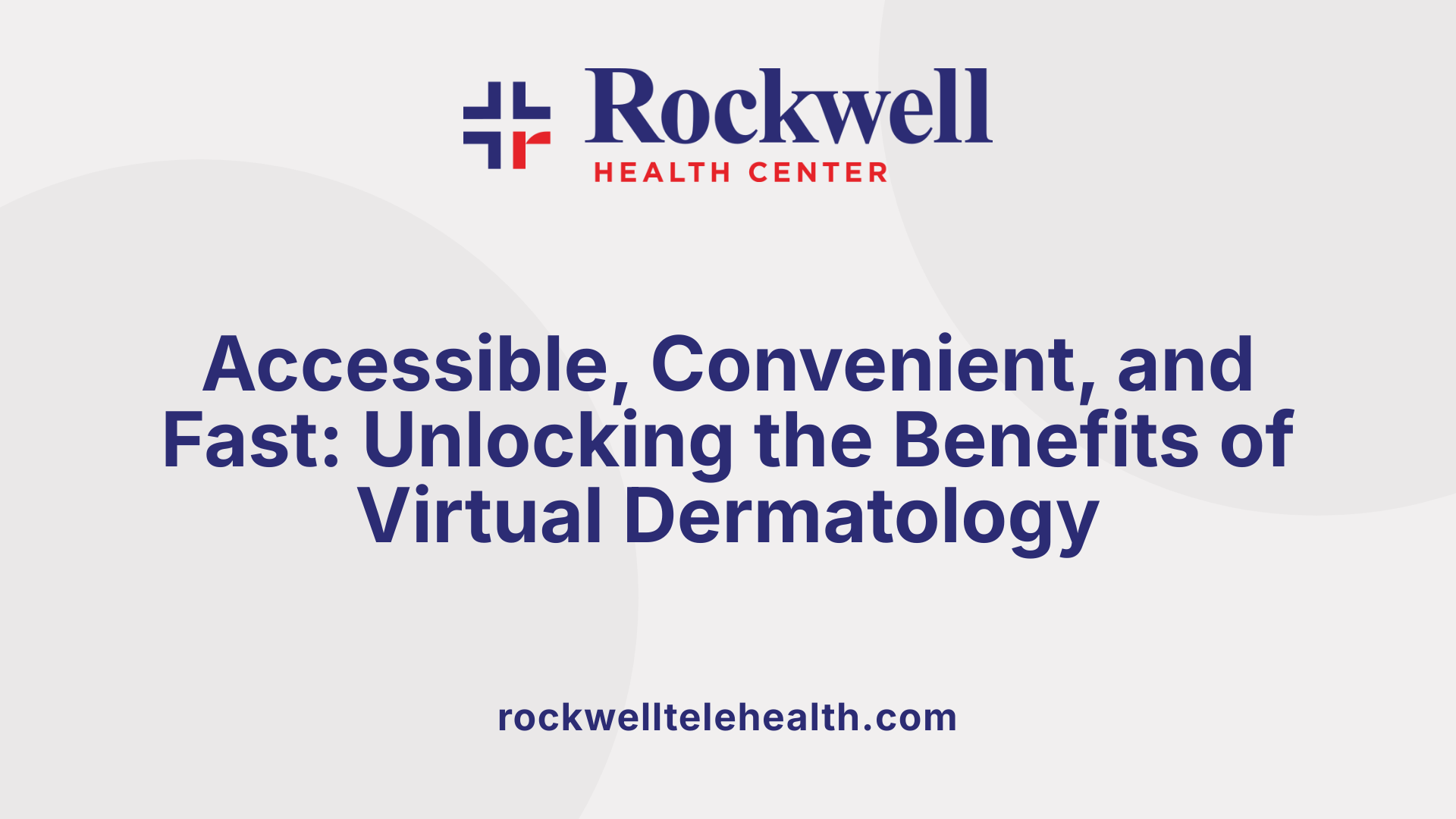
What are the benefits of virtual dermatology and teledermatology services?
Virtual dermatology and teledermatology provide several important advantages for patients and healthcare providers alike. One of the main benefits is improved access to specialist care, especially for those living in rural or underserved regions. Patients no longer need to travel long distances or wait for in-person appointments, making it easier to get timely diagnoses and treatment plans.
These services often include real-time video consultations and the ability to share high-quality images of skin conditions, speeding up the diagnostic process. As a result, patients experience shorter wait times and quicker start of treatment. Cost-effectiveness is another significant advantage, since teledermatology reduces the need for physical visits, decreasing travel expenses and time off work.
Another crucial benefit is the early detection and ongoing monitoring of serious skin issues, such as melanoma. Regular virtual inspections and mole checks facilitate early diagnosis, increasing chances for successful treatment.
Patients also enjoy greater privacy and comfort during consultations, which can encourage more open communication about sensitive skin concerns. Overall, teledermatology enhances healthcare quality by combining convenience, accessibility, and prompt, accurate diagnosis, making high-level dermatological care more available to everyone.
Scope, Effectiveness, and Limitations of Telehealth in Dermatology

What is the scope, effectiveness, and limitations of telemedicine for dermatology?
Telemedicine, especially teledermatology, has significantly widened the reach of skin care services. It allows patients from rural or remote areas to connect with board-certified dermatologists without traveling to a clinic. This technology facilitates early diagnosis, ongoing monitoring, and follow-up care for many skin conditions, thereby improving overall health outcomes.
In terms of scope, teledermatology covers a variety of common conditions such as acne, eczema, psoriasis, rosacea, and even mole checks for skin cancer screening. Many consultations involve sharing high-quality images, videos, or real-time video calls, enabling dermatologists to evaluate skin issues remotely. This process supports early detection of serious conditions like melanoma and enhances management of chronic ailments.
Regarding effectiveness, telehealth has proved quite reliable for routine follow-up appointments, medication management, and initial assessments. Its efficacy is boosted by technological tools such as AI skin analysis and secure electronic health records, ensuring precise and timely diagnoses. Platforms like Miiskin and others have conducted thousands of virtual consultations, demonstrating confidence in the model’s ability to deliver expert care efficiently.
However, telemedicine does have limitations. The biggest challenge is the inability to perform physical examinations or invasive procedures like biopsies. This can hinder definitive diagnosis for some suspicious lesions. Additionally, technical issues like poor internet connectivity or subpar image quality can reduce diagnostic accuracy. Certain severe or complex cases still require in-person evaluation.
Situations that necessitate face-to-face care include suspicious moles needing biopsy, severe or rapidly worsening symptoms, and procedures like surgical removal or laser treatments. While teledermatology is an excellent, accessible tool for many skin issues, it is best utilized as a complement to traditional practice, especially in complex cases.
In conclusion, teledermatology enhances access, speeds diagnosis, and offers effective management for many skin conditions. Yet, it must be applied judiciously, with awareness of its limitations, and integrated into a comprehensive dermatology care model to ensure optimal patient outcomes.
Comparing Teledermatology with Traditional In-Person Care
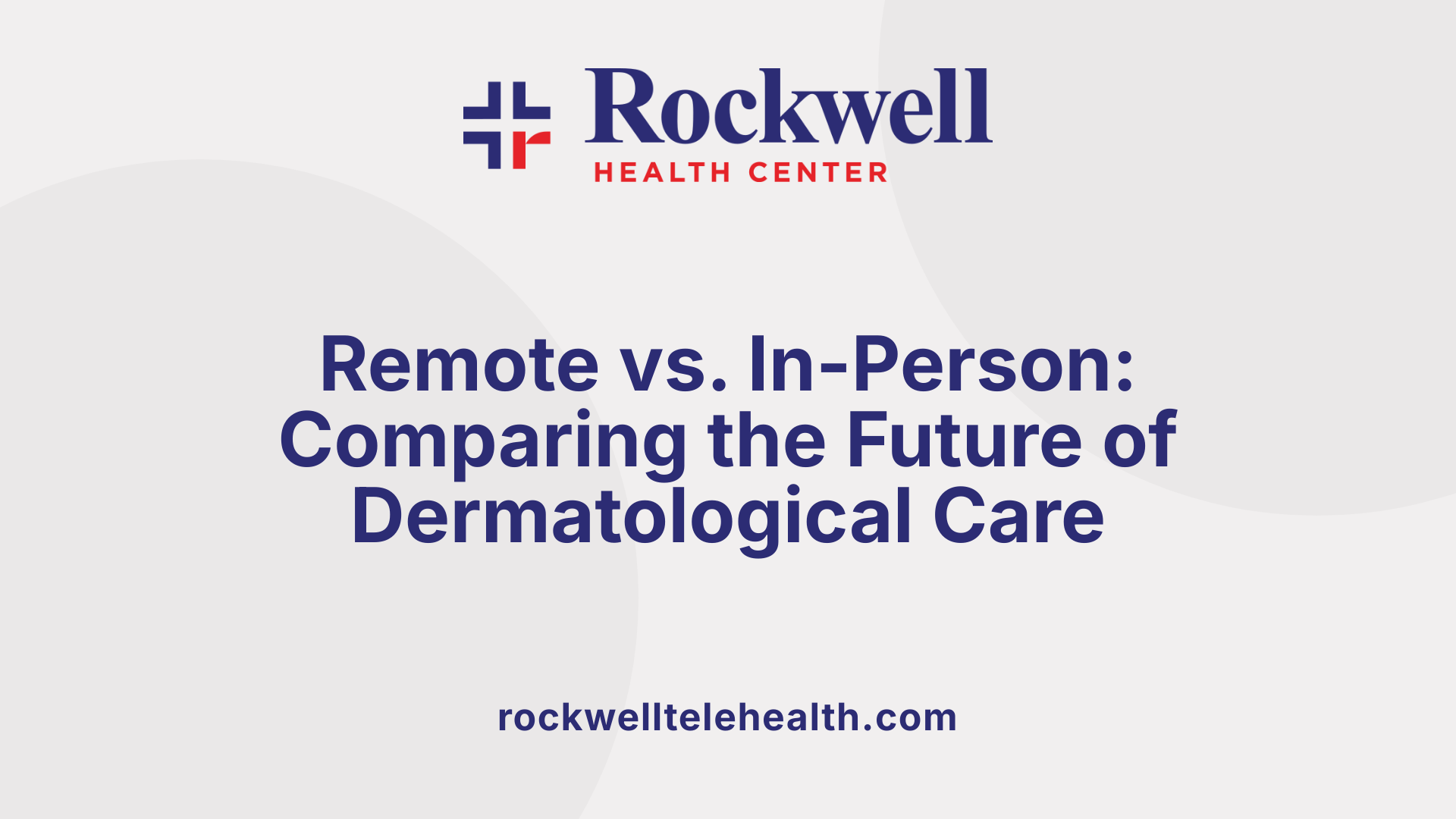
How does teledermatology compare to traditional in-person skin assessments?
Teledermatology, especially the store-and-forward (SAF) method, offers a practical alternative to visiting a dermatologist’s office. Patients and doctors share images and medical histories online, making care more accessible and faster.
Research indicates that the accuracy of remote diagnoses closely matches that of face-to-face evaluations. Patients often report high satisfaction, and doctors find the process efficient.
One of the main benefits is cost savings—many studies show teledermatology reduces expenses and cut wait times by over half. This approach is especially helpful for those in rural or underserved communities, who might otherwise struggle to find specialist care.
Live video consultations allow real-time communication, providing another layer of interaction. On the other hand, the SAF method requires less technology and infrastructure, making it more widely available.
Advanced techniques like teledermoscopy enable detailed examination of skin cancer risks remotely.
However, challenges remain. Image quality depends on the patient’s ability to capture clear photos, which can affect diagnostic confidence. Complex cases needing physical exams or biopsies still require in-person visits.
In summary, teledermatology is a valuable supplement to traditional care, boosting access and efficiency. Still, certain conditions and procedures call for direct, in-person evaluation to ensure comprehensive treatment.
Patient Expectations from Remote Skin Consultations
How easy is it to access dermatology care from home?
Remote skin consultations provide a significant level of convenience. Patients can connect with board-certified dermatologists without leaving their homes, utilizing secure video calls, messaging, or phone conversations. All that is needed is a device equipped with a camera and internet connection. This setup allows individuals across all regions, including those in rural or remote areas, to access expert skin care quickly and comfortably.
What is involved in photograph submission and virtual discussion?
Patients are typically asked to prepare clear, high-quality photos of their skin concerns, taken in good lighting and from different angles. Avoiding makeup and ensuring the skin is clean can improve the accuracy of virtual assessments. During the consultation, patients discuss their symptoms, share images, and ask questions via secure, HIPAA-compliant platforms. This combination of digital imagery and real-time conversation enables dermatologists to evaluate skin conditions thoroughly.
How are diagnosis, treatment plans, and prescriptions handled?
Based on the submitted images and medical history, dermatologists provide an expert assessment, diagnosis, and personalized treatment plan. This may include topical or oral medications, recommendations for skincare routines, or advice for further in-person evaluation if necessary. Medications can often be prescribed electronically and delivered directly to the patient's home or available for curbside pickup, streamlining the entire process.
What are the limitations, and when is in-person care crucial?
While virtual consultations are effective for many skin issues like acne, eczema, and minor rashes, certain conditions require in-person examinations. Suspicious moles, skin growths that look atypical, or severe symptoms like rapid changes in skin lesions need immediate medical attention. For complex cases, or if a biopsy or surgical intervention is needed, an in-person visit is essential.
Overall, remote skin consultations offer a fast, accessible, and private way to manage a wide range of dermatological concerns. They are particularly useful for ongoing management of chronic conditions, routine checks, and cosmetic advice, but they complement rather than replace urgent or serious in-person care.
Common Conditions Effectively Treated Remotely
Many skin conditions can be effectively managed through remote consultations using teledermatology. These virtual appointments are well-suited for diagnosing and monitoring conditions that are primarily visible and do not require immediate physical procedures.
Acne, eczema, psoriasis, and dermatitis are among the most common skin issues treated remotely. Patients can share high-quality images or participate in live video visits with dermatologists to receive personalized treatment plans, skincare routines, and medication prescriptions.
In addition, teledermatology is effective for evaluating skin rashes such as hives, allergic reactions, and other irritations, as well as for conditions like rosacea, cold sores, and warts. Chronic skin problems, including hair loss and hyperhidrosis (excessive sweating), can also be managed through regular virtual check-ins, enabling ongoing monitoring and treatment adjustments.
Early detection and follow-up of skin cancers, pigmented lesions, and non-melanoma tumors are integral parts of teledermatology. Patients can upload images for initial assessment, and if necessary, arrange in-person biopsies or procedures. This approach aids in catching malignant changes early while reducing unnecessary clinic visits.
The capability of telemedicine to address such a broad spectrum of skin conditions makes it an accessible, cost-effective, and efficient option for many dermatological needs. Decisions on remote treatment depend on the condition's complexity and the dermatologist’s assessment during virtual consultations.
| Condition Type | Examples | How Telemedicine Helps | Additional Notes |
|---|---|---|---|
| Common Skin Conditions | Acne, eczema, psoriasis, dermatitis | Diagnosis, treatment planning, medication prescriptions | Regular monitoring for chronic conditions |
| Skin Rashes and irritations | Hives, allergic reactions, cold sores, warts | Visual assessment via photos or video | Identifies triggers and recommends treatments |
| Chronic Conditions | Hair loss, hyperhidrosis, melasma | Ongoing management, follow-up consultations | Supports long-term care |
| Skin Cancer and Lesions | Suspicious moles, pigmented lesions | Remote evaluation, early detection, monitoring | Biopsies or surgical procedures still require in-person care |
This approach leverages digital imaging and secure online platforms, making it easier for patients everywhere to access expert dermatological care.
Future Outlook and Integration of Teledermatology in Skin Care

How will teledermatology supplement in-person care?
Teledermatology is increasingly viewed as a valuable addition to traditional dermatology practices. It offers convenience and quicker access to expert opinions, especially for routine check-ups, chronic condition management, and cosmetic consultations. While it cannot replace in-person procedures like biopsies or surgical interventions, virtual care effectively screens for suspicious moles or lesions needing further examination. Patients benefit from ongoing monitoring and timely interventions without frequent clinic visits.
What technological improvements are shaping teledermatology?
Advancements include high-resolution imaging, AI-based skin analysis, and more secure, user-friendly platforms. These innovations enhance diagnostic accuracy and streamline workflows. Integration with electronic health records ensures seamless data management, while AI tools assist in preliminary assessments. As technology evolves, teledermatology becomes more reliable, reducing misdiagnoses and supporting personalized treatment plans.
How does teledermatology function during health crises?
During emergencies like the COVID-19 pandemic, teledermatology proved essential. It minimized exposure risk for vulnerable populations and healthcare workers while maintaining continuous skin care services. Virtual consultations allowed early detection of serious conditions such as melanoma, preventing delays in treatment. Its ability to deliver safe, remote care during crises solidified its role as a vital healthcare component.
How is teledermatology helping to broaden access to care?
This approach lowers barriers for patients in rural or underserved areas, who may otherwise face long travel times or limited specialist availability. By providing remote expertise, teledermatology ensures timely diagnosis and management for a wider population. It also reduces waiting times and costs, making skin care more accessible and equitable.
| Aspect | Benefit | Additional Details |
|---|---|---|
| Supplementation | Enhances access, early detection | Complements in-person visits for routine and cosmetic care |
| Technology | Improves accuracy and reliability | High-res images, AI, seamless integrations |
| During Health Crises | Ensures care continuity | Reduces infection risk, enables ongoing monitoring |
| Access Expansion | Reaches remote areas | Lowers barriers, promotes healthcare equity |
This forward-looking integration of teledermatology emphasizes its role in providing comprehensive, accessible, and effective skin care—an essential evolution in modern dermatology.
The Future of Digital Skin Care
As technology advances and platform reliability improves, remote dermatology consultations are poised to become an integral part of holistic skin health management. With benefits ranging from increased accessibility and early diagnosis to personalized treatment planning, teledermatology offers an efficient, patient-centered approach. While it complements traditional in-person assessments, certain complex or suspicious conditions will still require physical examination or biopsy. Overall, teledermatology heralds a new era of convenience, affordability, and effective skin care, opening up possibilities for timely intervention and ongoing skin health support from the comfort of home.
References
- Online Dermatologist | Affordable Virtual Skin or Hair Consults
- Telemedicine and Dermatology: Virtual Skin Check-ups
- Expanding Access to Quality Dermatological Care
- Telederm | Online Dermatology Appointments
- How a virtual skin care appointment can save your skin
- What is virtual dermatology? And how does it work?
- Telemedicine for Dermatology Consultations
- Telemedicine in Dermatology: When to Use It vs. In-Person ...
- Virtual Skin Consultations




















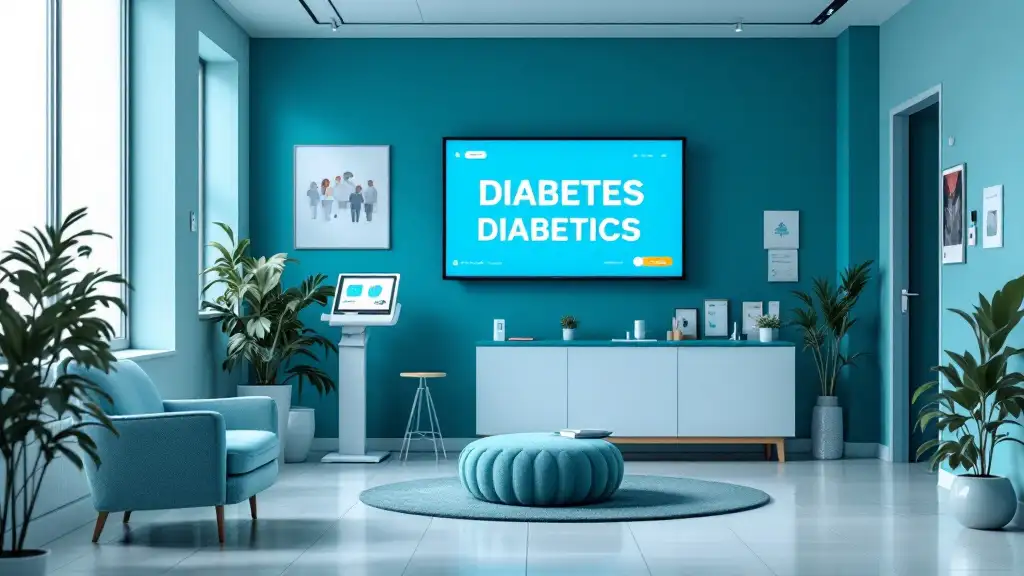
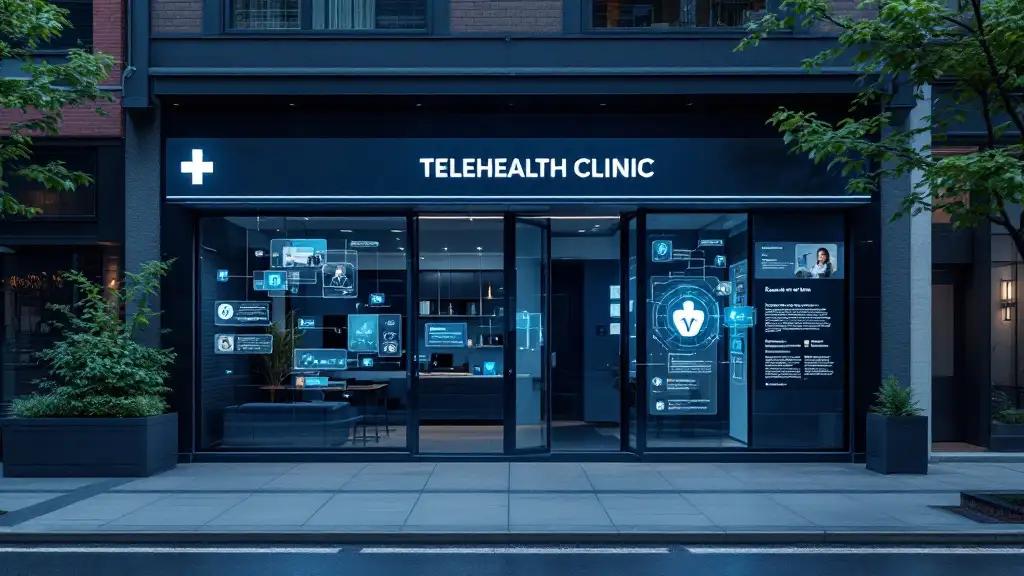

























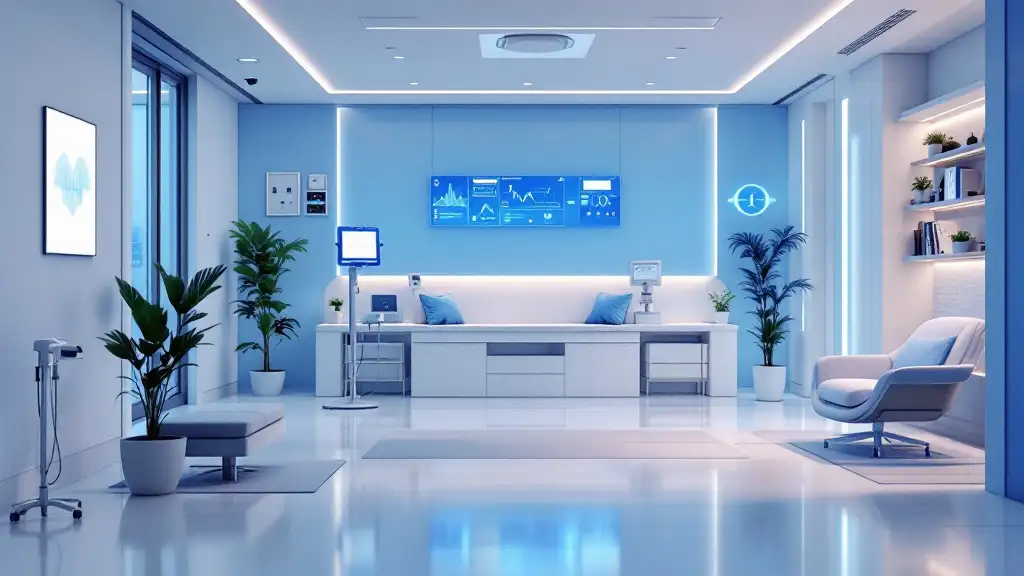







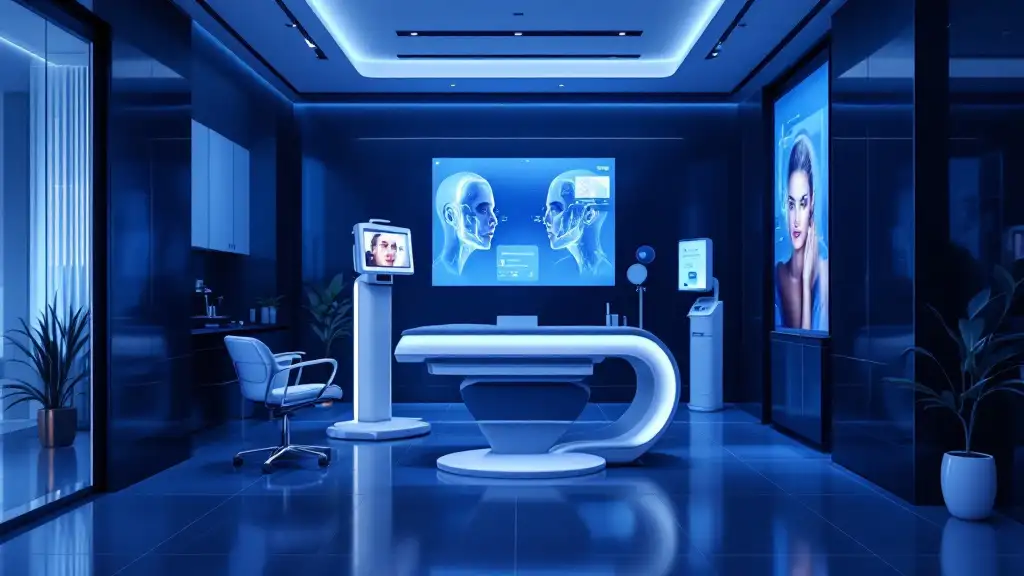








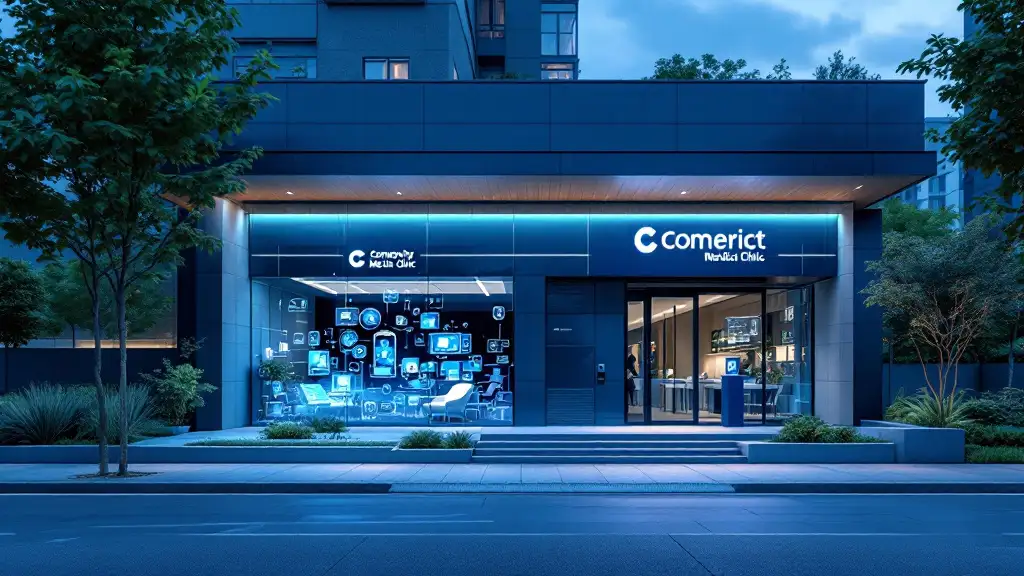




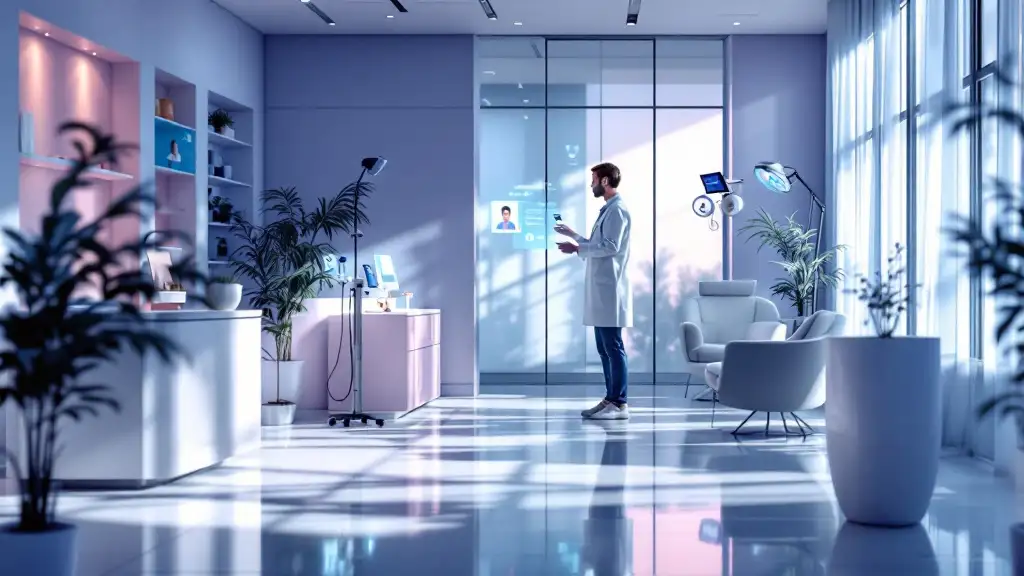


















.png)